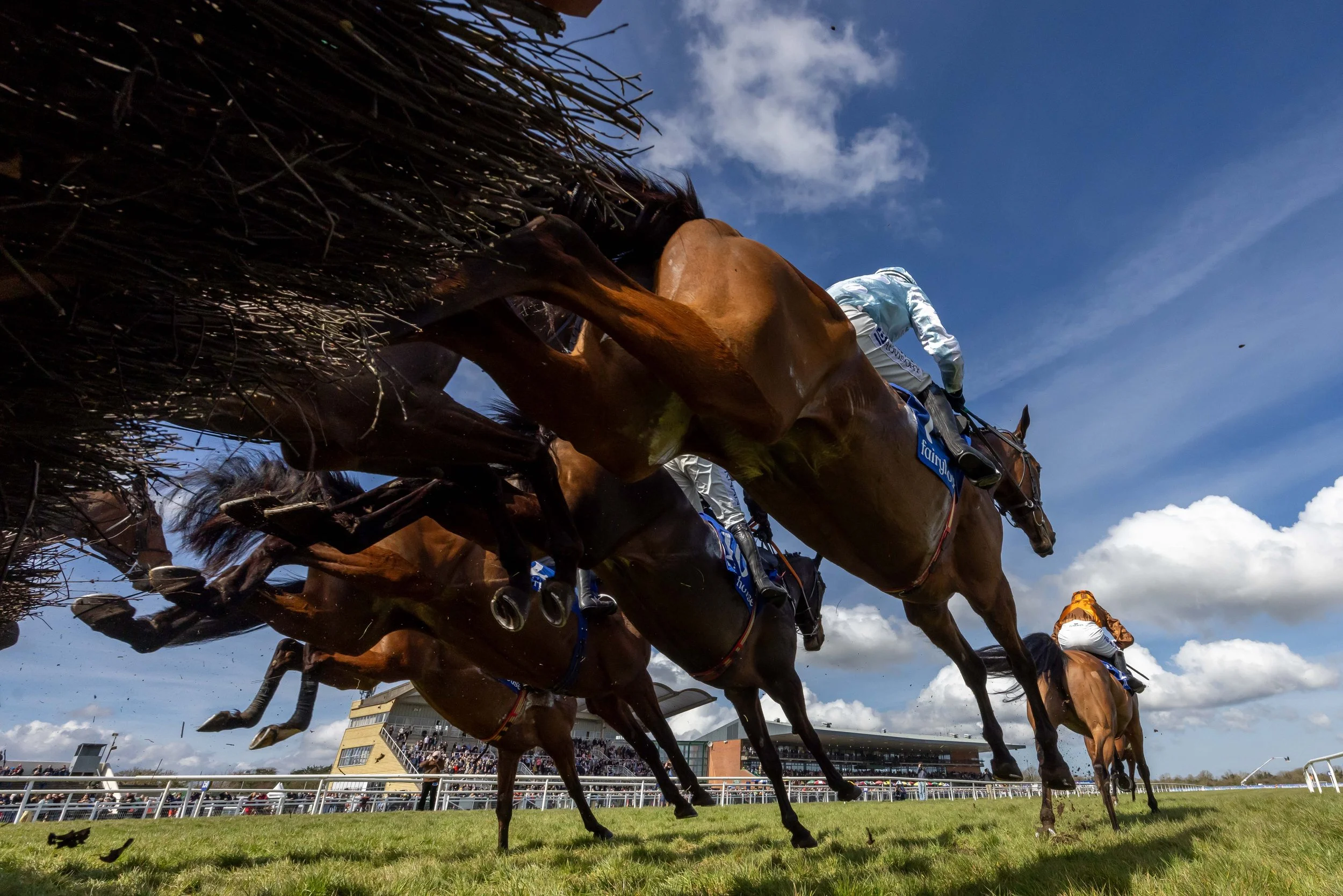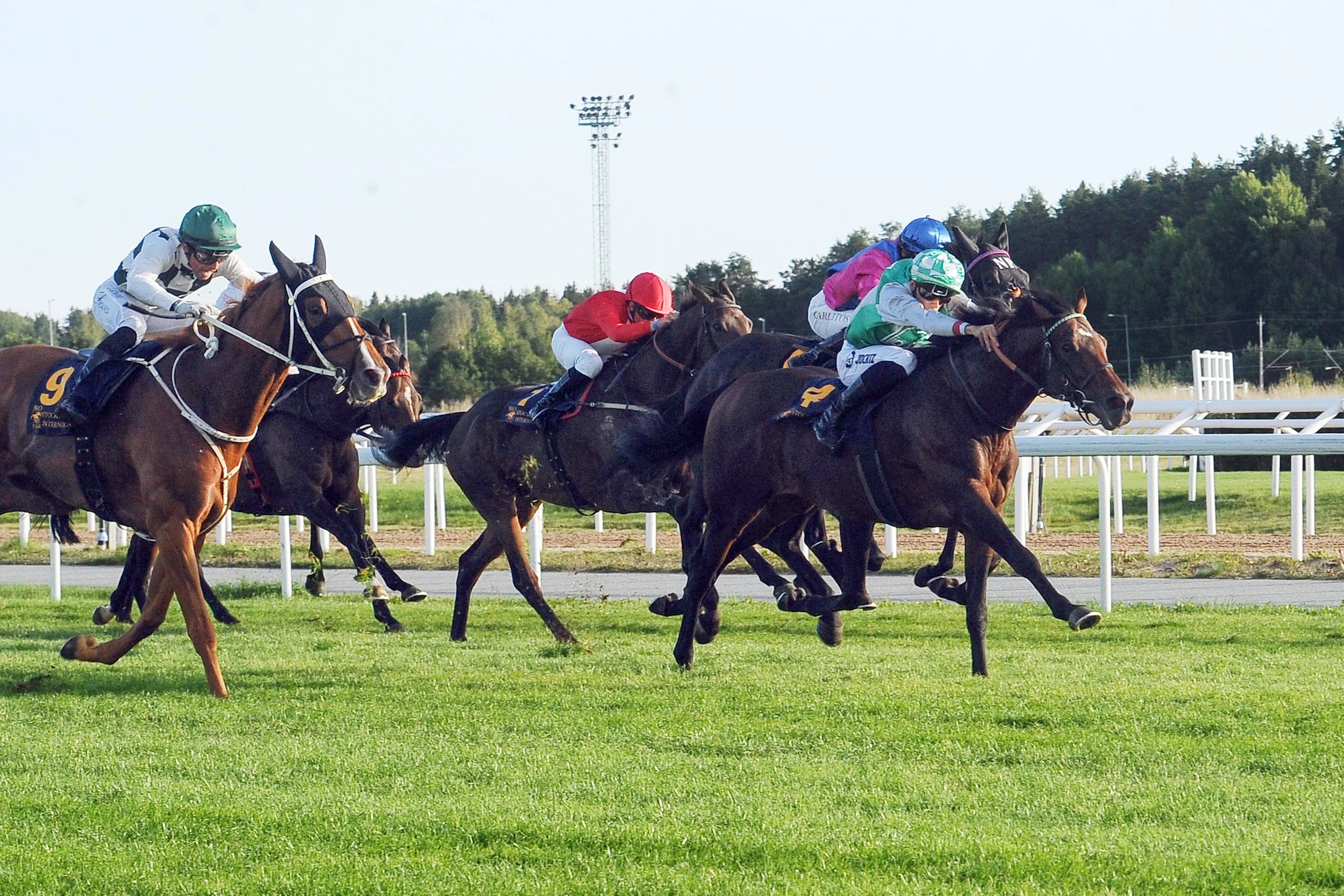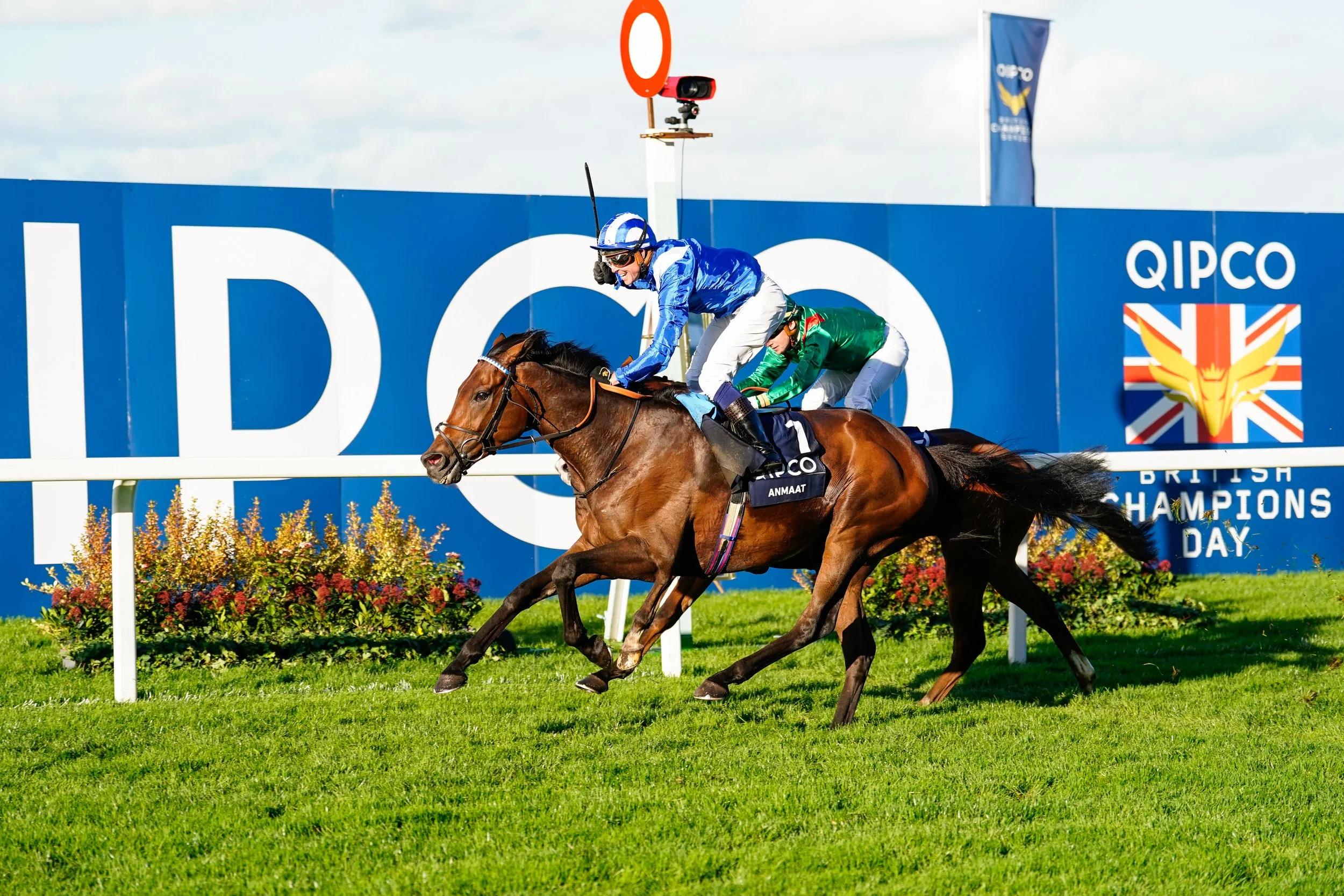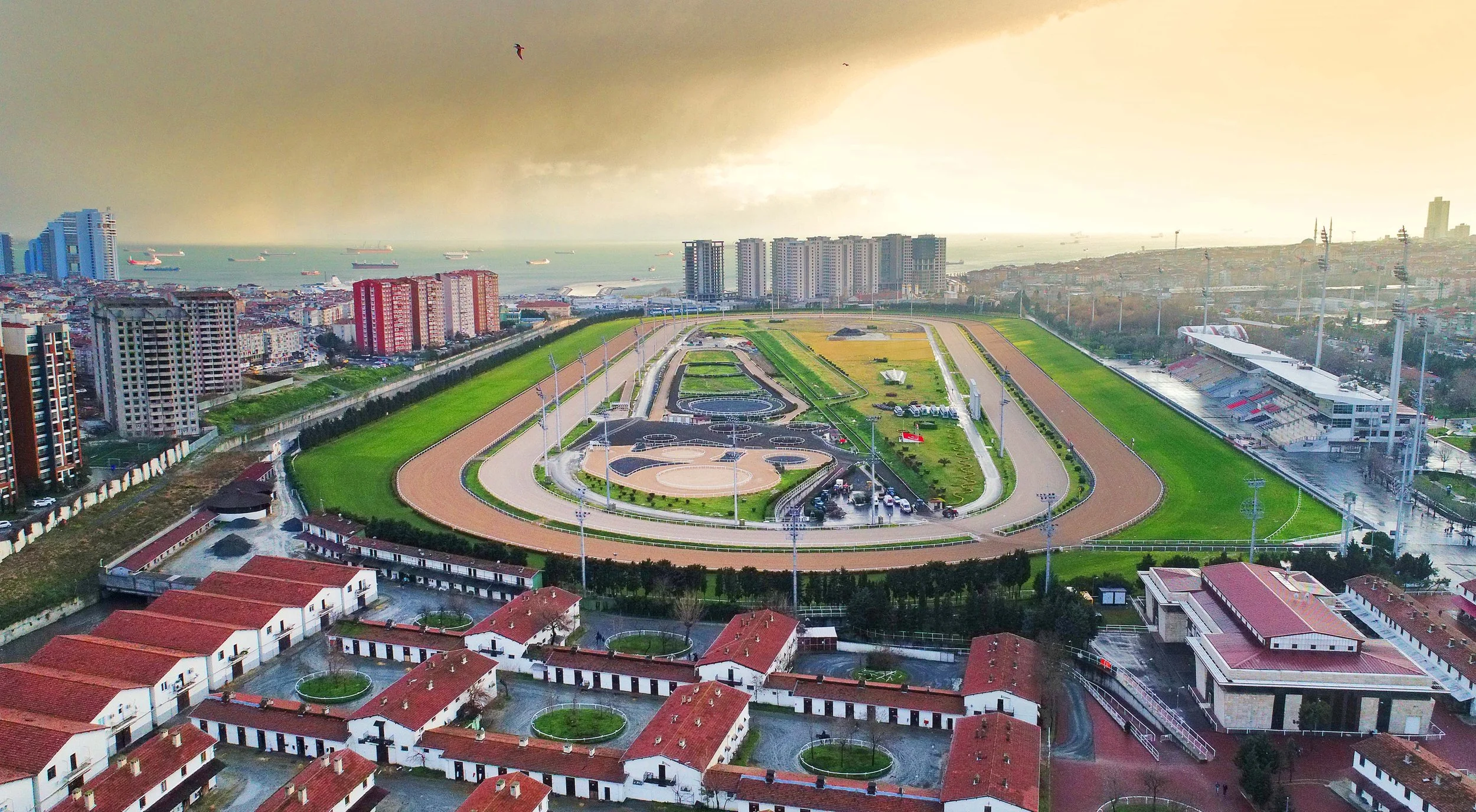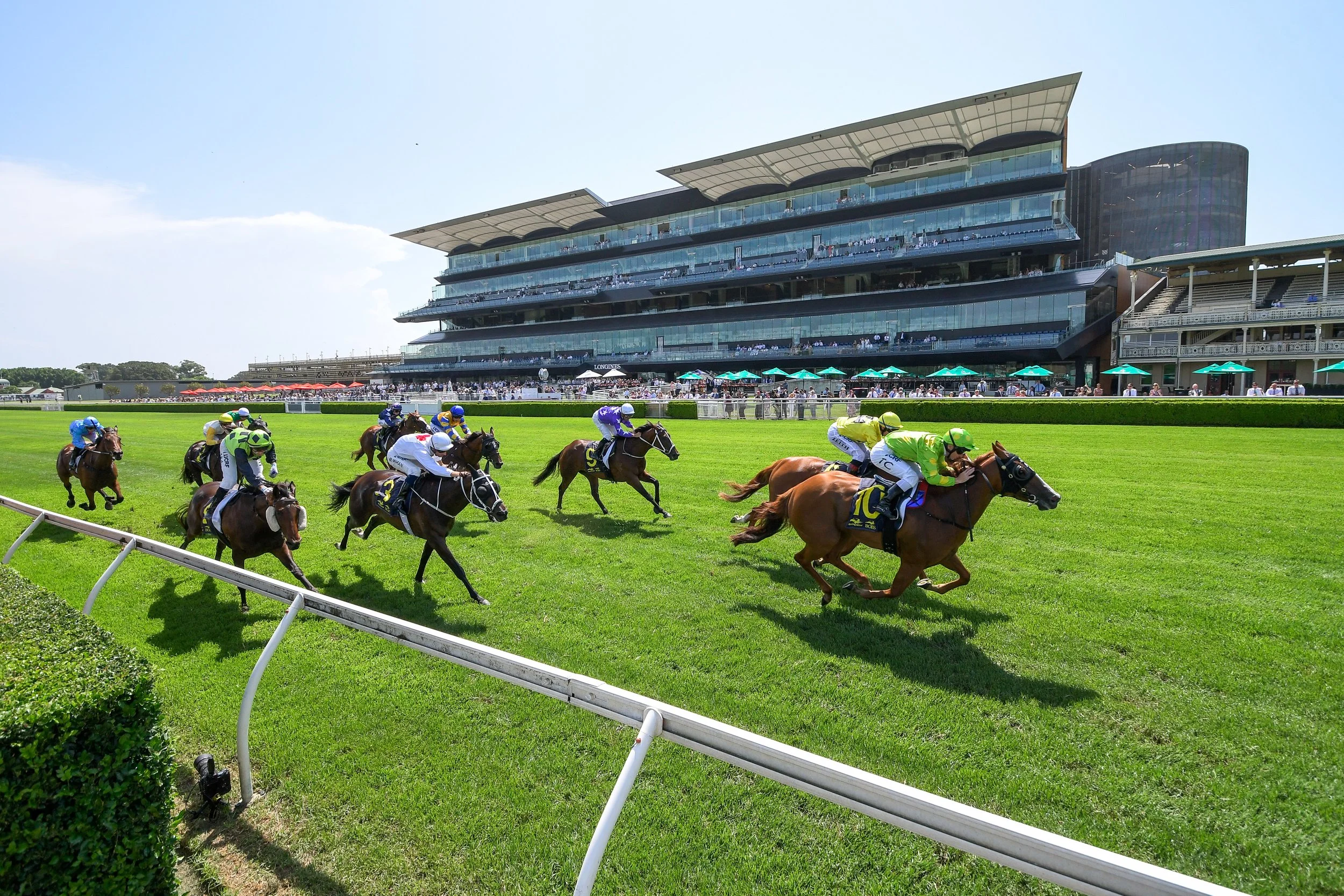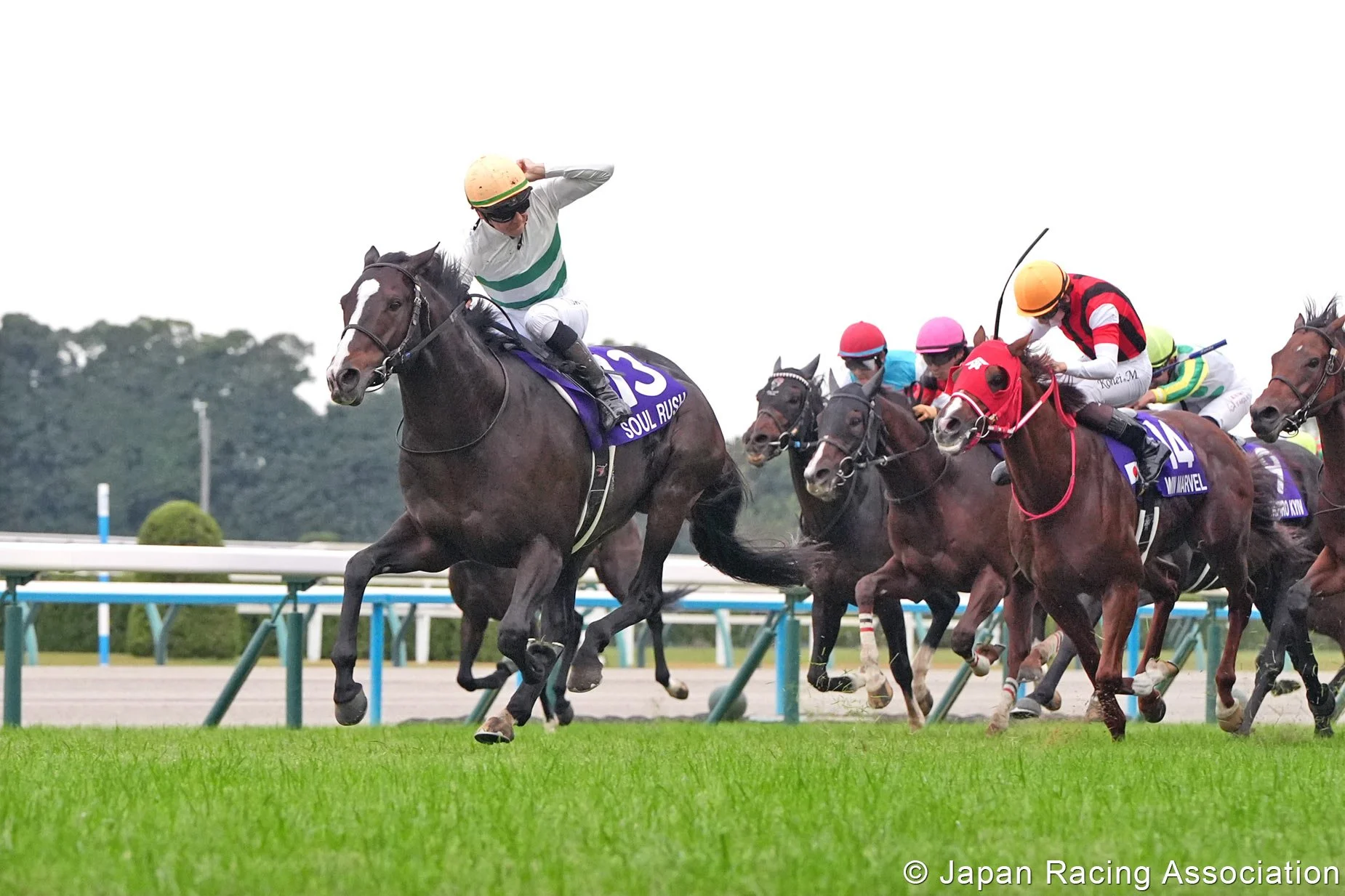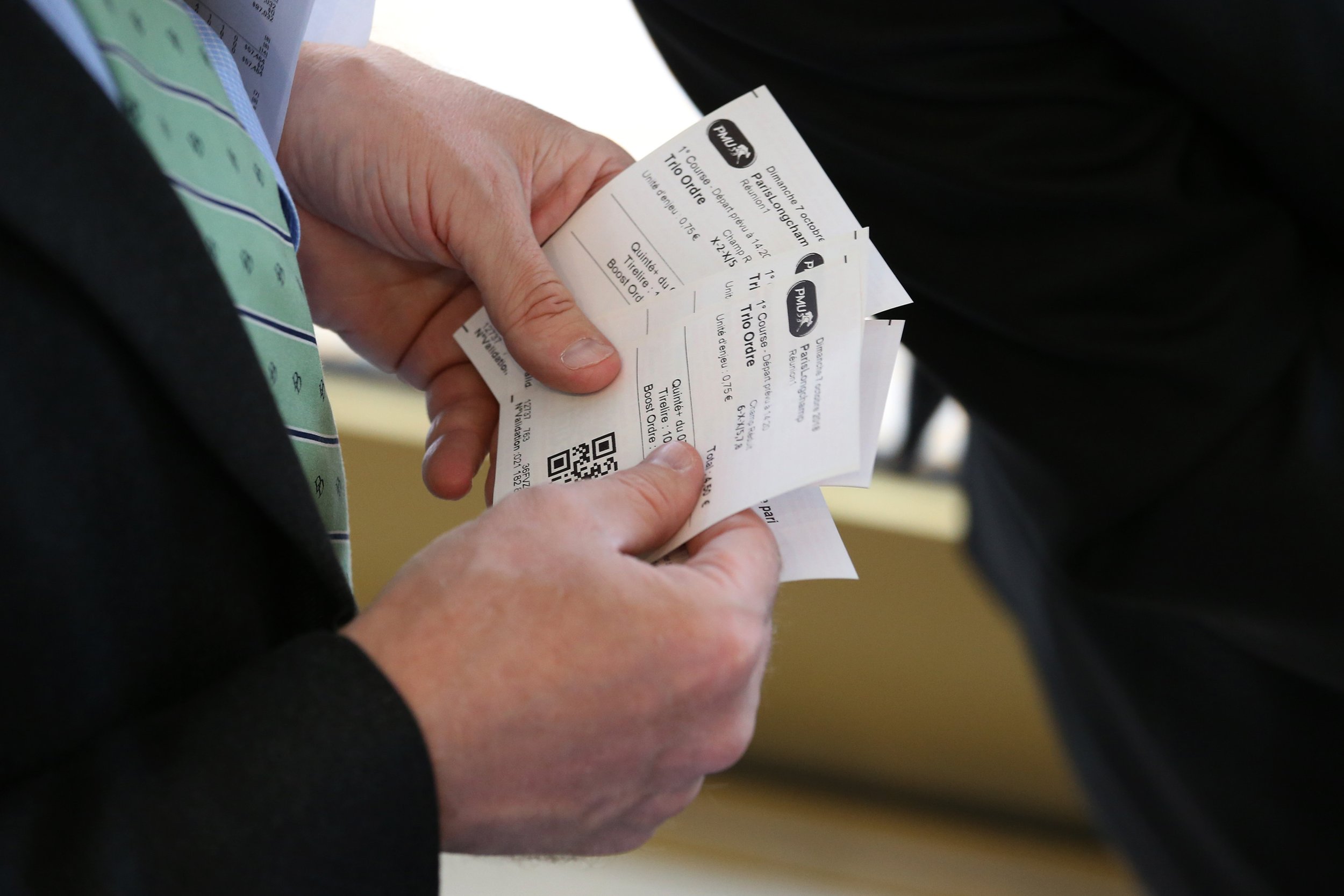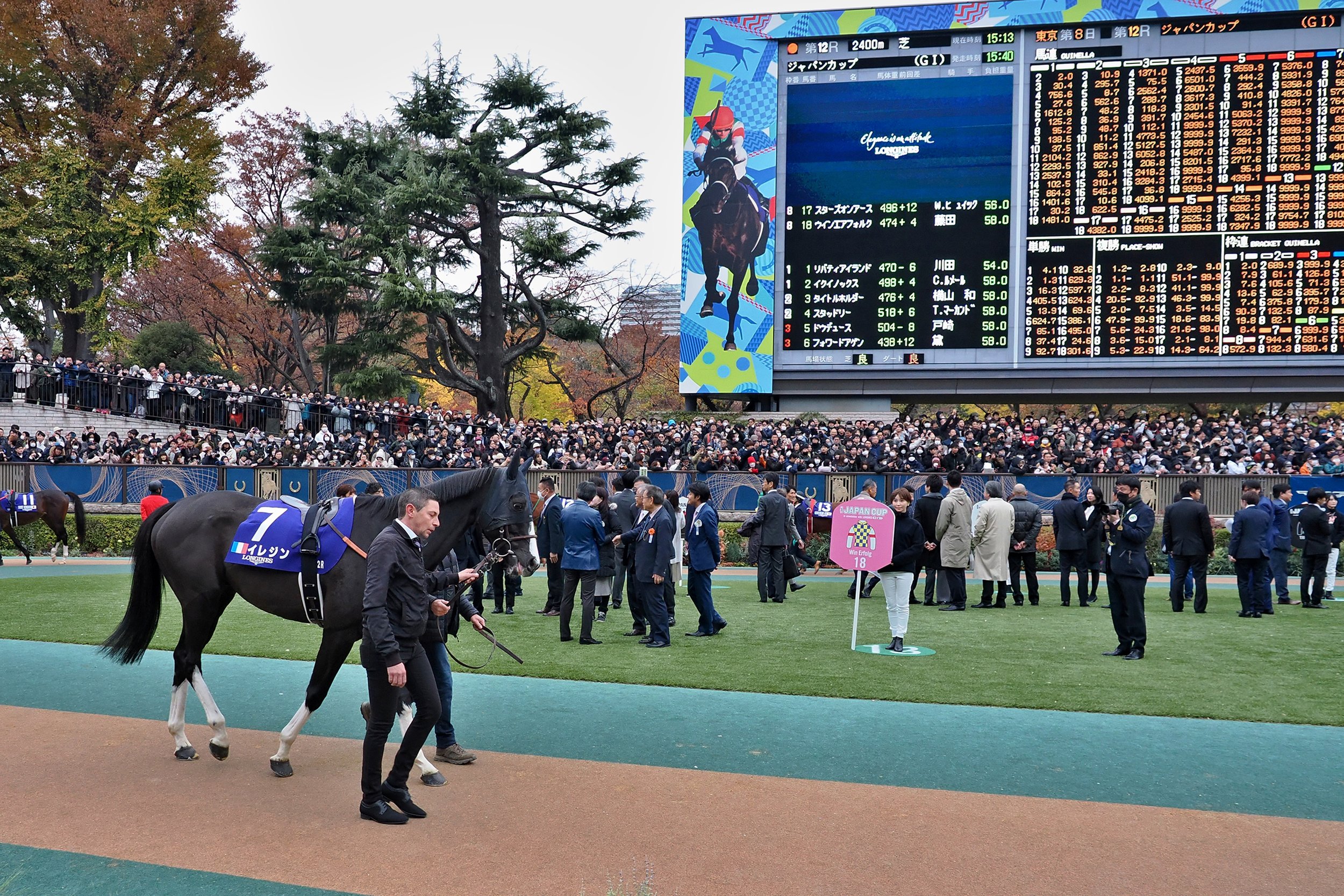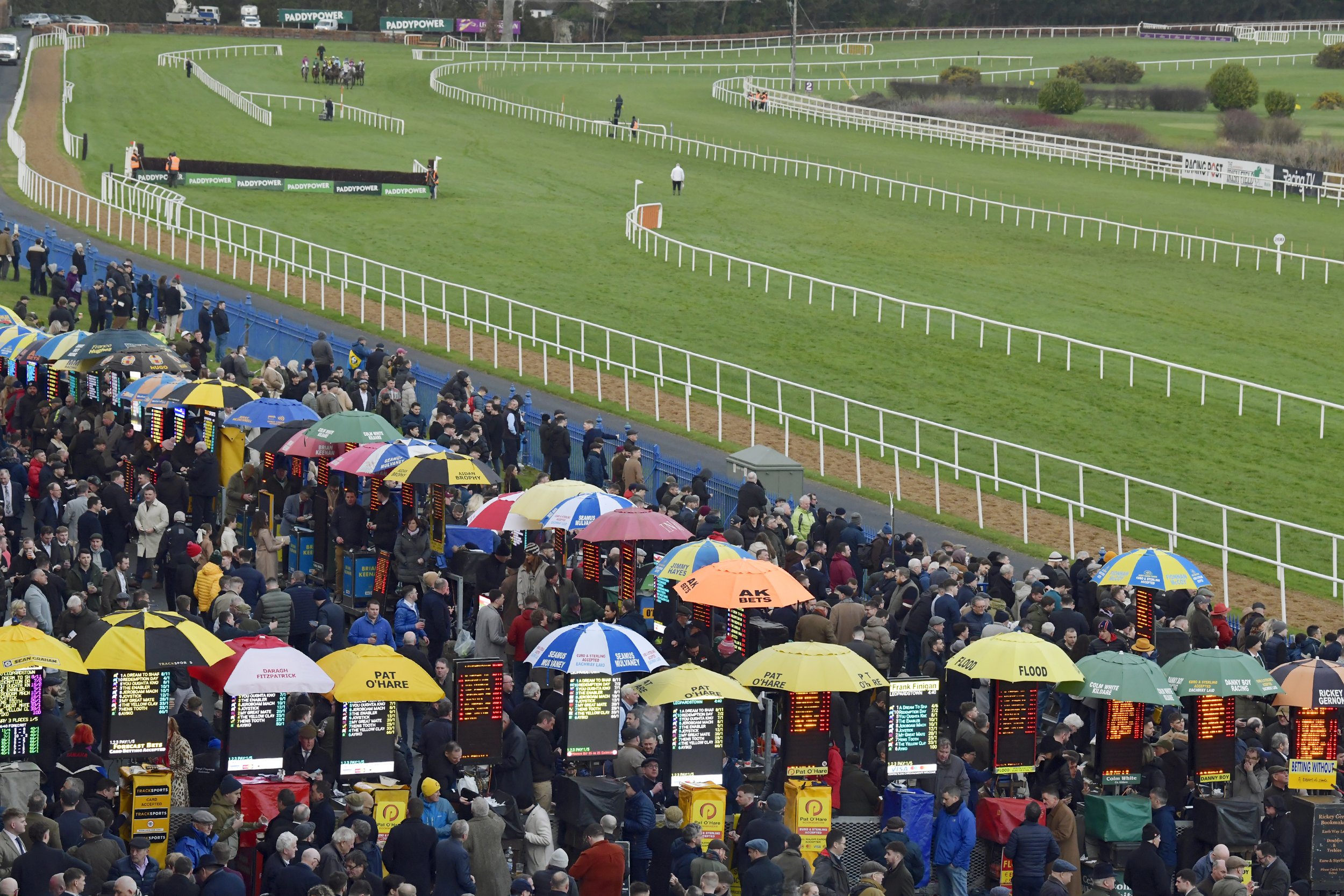Have Horse Will Travel - the international racing opportunities that trainers should be targeting this autumn
Ireland
The Irish Champions Festival takes place at Leopardstown and the Curragh 13th and 14th September respectively. The Curragh boasts the richest day of its year, with a card worth over €2.5m (£2.10m) in total. The highlights are the €600,000 (£503,865) Gp.1 Irish St Leger for three-year-olds and up, the Gp.1 Moyglare Stud Stakes and Gp.1 Vincent O’Brien National Stakes for juveniles and Gp.1 sprint The Flying Five Stakes, each worth €400,000 (£335,900).
The €200,000 (£168,000) Gp.2 Blandford Stakes, the €250,000 (£210,000) Tattersalls Ireland Super Auction Sale Stakes and two Premier Handicaps each worth €150,000 (£126,000) complete the card.
On the opening day at Leopardstown, the nine-race card features five Group races, including the €1.25m (£1.05m) Gp.1 Irish Champion Stakes 2000m (10f), the €400,000 (£335,900) Gp.1 Matron Stakes, €200,000 (£168,000) Gp.2 Solonaway Stakes, €150,000 (£126,000) Juvenile Stakes, €100,000 (£84,000) Gp.3 Tonybet Stakes, the €100,000 (£84,000) Ingabelle Stakes and two Premier Handicaps each carrying €150,000 (£126,000).
In addition to the Irish Champions Festival, the Autumn Racing Weekend will be held at the Curragh 27th and 28th September, which includes the 1400m (7f) €1m (£850,000) Goffs Million, the richest race for two-year-olds in Europe, and the richest handicap in Europe the 3200m (16f) Irish Cesarewitch, worth €500,000 (£425,000). The meeting will also include the Gp.2 Beresford Stakes (€120,000/£101,700) 1600m (8f) for juveniles, celebrating its 150th anniversary, 1200m (6f) Gp.3 Renaissance Stakes (€60,000/£50,800), and 1400m (7f) Gp.3 Weld Park Stakes (€60,000/£50,800).
Irish jumps series
For National Hunt runners, a series of seven 3300m (2m1f) 10-hurdle Irish Stallion Farms EBF Academy Hurdle races will be run in Ireland from October to December. The first is at Cork on 12th October, followed by Fairyhouse 4th October, Punchestown 13th November, Cork 23rd November, Navan 6th December, Naas 15th December and concluding at Leopardstown 29th December.
The races are open to three-year-olds which have not had any previous run under either Rules of Racing or I.N.H.S. Rules other than in Academy Hurdle races. Horses that run in any of the seven races can continue their careers in bumpers, maiden hurdles or Point-to-Points.
Jonathan Mullin, Director of Racing at HRI, explains, “Each of the races offer a Sales Voucher, similar to the IRE incentive for the owners of any eligible Irish-bred horse which wins or is placed either second or third. Each winning owner will receive a €5,000 voucher while the owners of the runner-up and the third-placed horses will each receive €3,000 and €2,000 respectively.”
Additionally, all seven races are part of the Weatherbys National Hunt Fillies Bonus Scheme, so three-year-old Irish-bred fillies that win an Irish EBF Academy Hurdle in 2025 will be awarded an additional €7,500 bonus on top of the race prize money and will still be eligible for the €5,000 scheme bonuses available if subsequently winning a bumper or a steeplechase, but not a maiden hurdle.
Germany
This season, Deutscher Galopp introduced 12 premium handicaps and 15 Premium Racedays, which included seven Group 1 racedays, guaranteeing at least €15,000 (£12,500) in handicaps and maiden races on those days.
The BBAG Auktionsrennen at Mülheim 4th October is worth €52,000 (£43,600), run over 2000m (10f) for three-year-olds offered as yearlings at the 2023 BBAG Sale, while at Krefeld 15th October is the €55,000 (£46,000) Gp.3 Herzog Von Ratibor-Rennen for two-year-olds, over 1700m (8.5f).
The Berlin-Hoppegarten card 3rd October is one of the Premium Racedays and as well as including the 2000m (10f) Gp.3 Preis Der Deutschen Einheit, €55,000 (£46,000) for three-year-olds and up, there is also a 1400m (7f) BBAG Auktionsrennen for three-year-olds offered as yearlings at the 2023 BBAG Sale, and a support card of seven other races from €15,000 (£12,500) to €22,000 (£18,500). Similarly, 19th October at Baden-Baden sees a nine-race card with the guaranteed minimum that also features the Gp.3 €155,000 (£130,000) Preis Der Winterkönigin for two-year-olds over 1600m (8f), and the Gp.3 Herbst Trophy €55,000 (£46,000) over 2400m (12f) for three-year-olds and up.
The 26th October Hannover Premium card includes the €55,000 (£46,000) Gp.3 Herbst-Stutenpreis over 2200m (11f) for three-year-olds and up and two €25,000 (£21,000) juvenile races over 2000m (10f) and, for fillies only, 1400m (7f). The Premium Racedays conclude at Munich 8th November, where the feature is the Gp.1 Grosser Allianz Preis Von Bayern over 2400m (12f) worth €155,000 (£130,000), and another €52,000 (£43,600) BBAG Auktionsrennen, this time for two-year-olds over 1600m (8f) offered as yearlings at the 2034 BBAG Sale.
Sweden
Sweden’s showcase takes place at Bro Park 12th September with a card that includes the Gp.3 Stockholm Cup International (Gp. 3) over 2400m (12f) for three-year-olds and up and worth SEK 1,000,000 (€91,700 / £76,900). The three Listed races on the support card are each worth SEK 550,000 (€50,500 / £42,350) and open to three-year-olds and up, namely the Bro Park Sprint Championship 1200m (6f), the Tattersalls Nickes Minneslöpning 1600m (8f) and the Lanwades Stud Stakes for fillies 1600m (8f).
Later Listed opportunities for three-year-olds up, each worth SEK 400,000 (€36,700 / £30,800), are the 2400m (12f) Skånska Fältrittklubbens Jubileumslöpning and the Peas and Carrots Mile over 1600m (8f) at Jägersro Galopp 5th October, and the 2100m (10.5f) Songline Classic at Bro Park 26th October.
Spain
The highlight of the Spanish season is Champions Day 19th October in Madrid, with a card that includes the Gran Premio Memorial Duque de Toledo over 2400m (12f) for three-year-olds and up, with a value of €50,000 (£42,000) and the Gran Premio Ruban over 1200m (6f) worth €40,000 (£33,500). The €40,000 (£33,500) Gran Criterium for two-year-olds is run over 1600m (8f) 26th October.
British Champions Day
Opening a card that features the British Champions Long Distance Cup (€590,000/£500,000), the British Champions Sprint Stakes ((€590,000/£500,000), the British Champions Fillies and Mares Stakes ((€590,000/£500,000), the Queen Elizabeth II Stakes (€1.36m/£1.15m), the Champion Stakes (€1.53m/£1.3m) and the 1600m (8f) Balmoral Handicap (€295,000/£250,000) is the newly-introduced Two-Year-Olds Conditions Race, worth €295,000 (£250,000), taking the total prize money on the day to €5.13m (£4.35m). Open to two-year-olds, the 1200m (6f) conditions race, like all races at this distance at Ascot, will be run over the straight course.
Turkey
The Jockey Club of Türkiye hosts seven international races in Istanbul at Veliefendi Racetrack, as part of the International Racing Festival run on the first weekend in September. The highlights are the €62,650 (£53,400) 2000m (10f) Gp.2 Anatolia Trophy for three-year-olds up, €190,000 (£162,000) Gp.2 1600m (8f) Topkapi Trophy for three-year-olds up, the €98,700 (£84,150) Gp.3 1200m (6f) Queen Elizabeth II Cup for two-year-olds, €197,500 (£168,400) Gp.3 2400m (12f) Bosphorus Cup for three-year-olds up and the Gp.3 1600m (8f) €142,400 (£121,400) Istanbul Trophy, entries closing 6th August. There is a transport subsidy for international races, $18,000 for round-trip per horse arriving from the continents of America (North and South), Oceania, Africa and Far East countries, €12,000 for round trip per horse arriving from Europe and United Arab Emirates. Any horses scratched from the race after arrival by veterinary report will still receive transportation subsidy. The Gp.3 Malazgirt Trophy for purebred Arabians over 1600m (8f) will also be part of the card.
USA
Kentucky Downs is home to America's only European-style 2000m (10f) all turf racecourse, hosting just seven days racing from 28th August to 10th September, entries closing from 16th August, when emailed expressions of interest must also have arrived for the invitationals. The feature races are the $3.5m (€3m/£2.6m) Gr.3 Nashville Derby Invitational over 2400m (12f) for three-year-olds, the $2.5m (€2.19m/£1.86m) Gr.3 1600m (8f) Mint Millions Invitational and the 2400m (12f) Gr.2 Kentucky Turf Cup Invitational of the same value which is also a "Win and You're In Breeders' Cup Turf" race. Both races are for three-year-olds and up.
Carrying $2m (€1.75m/£1.48m) each are the Gr.3 Kentucky Downs Ladies Turf for fillies and mares three-year-olds and up over 1600m (8f), the Gr.2 Kentucky Downs Ladies Turf Sprint 1200m (6f) for fillies and mares three-year-olds and up, the Gr.1 1200m (6f) Franklin-Simpson Stakes for three-year-olds, the Listed 1600m (8f) Gun Runner for three-year-olds, the Gr.2 1200m (6f) Music City Stakes for three-year-old fillies, the Gr.3 2000m (10f) Kentucky Downs Ladies Marathon Invitational for three-year-olds and up fillies and mares, the Gr.3 2000m (10f) Dueling Grounds Oaks Invitational three-year-old fillies, and the Gr.2 Kentucky Downs Turf Sprint 1200m (6f) for three-year-olds and up which is another of the "Win and You're In Breeders' Cup Turf Sprint Division” races.
Each carrying purses of $1m (€870,000/£738,000) are the Bowling Green Gold Cup Invitational 3200m (16f) for three-year-olds up, the 1600m (8f) Listed Kentucky Downs Juvenile Fillies, the 1200m (6f) Listed Kentucky Downs Juvenile Sprint, the 1600m (8f) Listed Kentucky Downs Juvenile Mile, and the 1200m (6f) Untapable Stakes for two-year-old fillies. The Listed Tapit Stakes over 1600m (8f) for three-year-olds up heads three races worth $500,000 (€437,000/£370,000), alongside the 1600m (8f) NTL Tight Spot Overnight Handicap for three-year-olds up, and the 1600m (8f) Listed One Dreamer for fillies and mares three-year-olds up. Maiden races, already the richest in the world, carry €181,000 (€158,000/£133,300) per race.
“We want to build the Nashville Derby into a race that American and European horsemen alike point to and buy horses for,” says Ron Winchell, co-managing partner of Kentucky Downs with Marc Falcone. “We’ve positioned the Nashville Derby so that it fits into a big-money circuit for three-year-old turf horses.”
The 42nd running of the Breeders’ Cup will be held for a fourth time in Del Mar, California, on the edge of the Pacific Ocean in San Diego “where the turf meets the surf”. Consisting of 14 Grade 1 races with purses and awards totalling more than $31m (€27.11m/£22.97m), the meeting takes place Friday 31 October and Saturday 1st November.
“Our return to Del Mar in back-to-back years marks the continuation of a wonderful collaboration and successful partnership, both with our friends at the track and with the greater San Diego area,” says Drew Fleming, President and CEO of Breeders’ Cup Limited. “We look forward to once again gathering where the turf meets the surf as the world’s best thoroughbreds put on an incredible show.”
“We couldn’t be more excited about hosting back-to-back Breeders’ Cup World Championships and welcoming the very best in international racing back to the town of Del Mar and the greater San Diego area,” said Joe Harper, CEO of the Del Mar Thoroughbred Club. “The Breeders’ Cup represents the pinnacle in world-class racing and the organisation’s willingness to return here again is a testament to the quality of our racing facilities, our idyllic weather, and the warm hospitality shown to our visitors by the local community.”
With 14 championship races held over two days, Future Stars Friday sees the two-year-old championships run for purses upwards of €931,130 (£783,500) and €1.9m (£1.6m). Saturday boasts nine races, culminating with the €6.5m (£5.5m) Gr1 Breeders’ Cup Classic. The “win and you’re in” series consists of 69 of the best races from around the world, from June to October, awarding each winner an automatic and free entry into the Breeders' Cup World Championships.
Bahrain
The Bahrain Turf Series is fairly new to the calendar and has seen just five renewals to date. Running from December through to February, each race carries prize money from €73,750 (£62,850) up to €91,880 (£78,200) with total and the series is designed to attract international runners rated 85-100 to compete against local Bahrain-based horses.
“We believe the time is right to build on the success of the Bahrain Turf Series and expand the international programme to incorporate our season’s premier races,” explains His Highness Shaikh Isa Bin Salman Bin Hamad Al Khalifa, Chairman of the Bahrain Turf Club. “Our most prestigious races, including the Crown Prince’s Cup and the King’s Cup, fall within the Bahrain Turf Series calendar, and are intended to make racing in Bahrain an even more attractive and compelling proposition for international visitors.”
In total, the Series of sprint and middle-distance races comprises of 12 races, six in each division, with each race carrying bonus prizes for the horses accumulating most points in their respective division.
At time of going to press the dates and 2025/26 prize monies were not available, but last year saw significant increases. In December are two 1000m (5f) and two 2000m (10f) races for horses rated 84-100 and a 1200m (6f) and 2000m (10f) race for those rated 80-100.
In January there are two conditions races, over 1000m (5f) and 1800m (9f). February, when the season concludes, sees opportunities for horses rated 80-100 at 1000m (5f), 1200m (6f), 1800m (9f) and 2000m (10f). For those seeking black type, the 2000m (10f) Gr2 Bahrain International Trophy in November for three-year-olds and up is establishing Bahrain as a premier horseracing destination. Run on turf, in 2024 the race was worth €921,858 (£785,315) in total, with €553,115 (£471,178) to the winner.
Entries close 2nd October with supplementary entry stages later in October, but there are three 'Automatic Invitation' races, for the first, second and third from The Royal Bahrain Irish Champions Stakes and the Gp.3 Strensall Stakes at York. The Bahrain Turf Club will provide air tickets for overseas connections and hotel accommodation on a room only basis. Shipment of invited horses will be arranged and paid for by the Bahrain Turf Club.
Australia
The Melbourne Cup Carnival needs no introduction and the Cup itself is only one of 10 Gp.1 racedays during the 22-day season at Flemington. The 3200m (16f) Gr1 Melbourne Cup will be worth A$8.66m (€4.93m / £4.14m) this year, with prize money down to 12th.
During the week there are three €1.8m (£1.6m) weight-for-age Gr1s, the 2000m (10f) Champion Stakes, 1600m (8f) Champions Mile and the 1200m (6f) Champions Sprint. “It is always a great thrill to host international connections who make the journey to Melbourne,” Leigh Jordon, the VRC Executive General Manager, tells us.
More recently the Sydney Everest Carnival held at Royal Randwick and Rosehill Gardens has competed for equal attention, running from 21st September to 9th November, and boasting the world’s richest race on turf, The Everest, over 1200m (6f) in mid-October at Royal Randwick and worth A$20m (€11.3m / £9.5m). The opening day at Royal Randwick features two weight-for-age races, each with a total prize of €615,840 (£520,265) for three-year-olds and up, The 7 Stakes 1600m (8f) and the Gp.2 1100m (5f) Shorts. Randwick later hosts the iconic 1600m (8f) Epsom Handicap, a Gp.1 worth €924,000 (£780,500) and on the Everest supporting card is the €3m (£2.6m) Gp.1 King Charles III Stakes over 1600m (8f).
At Rosehill Gardens, the Hill Stakes over 2000m (10f), and 1800m (9f) Five Diamonds each carry a purse of €1.2m (£1m), with the €6.2m (£5.2m) Golden Eagle over 1500m (7f) the showpiece in November.
Japan
The JRA offers travel incentives for particular overseas horses for Group 1 races and for invited overseas horses for the Japan Cup. The JRA provides air transport costs for the horse and two attendants, the owner, trainer, jockey, and their spouse/partner, and five nights’ accommodation at a JRA designated hotel.
All Japanese Gr.1s are free to enter, or by free invitation, and carry the same declaration fee of €20,200 (£17,500), with significant bonuses from first down to last for the participating winners of designated Gr.1 races globally. The 2400m (12f) Japan Cup is run at Tokyo in November for a purse of €7.3m (£6.3m), Also in November, at Kyoto, the 2200m (11f) Queen Elizabeth II Cup for fillies and mares carries a purse of €1.9m (£1.6m), and The Mile Championship is worth €2.7m (£2.3m). Run on dirt at Chukyo Racecourse, the 1800m (9f) Champions Cup has a total value of €1.7m (£1.5m).
International Opportunities - the key international races to target this autumn
Article by Lissa Oliver
As we saw in our last issue, new and emerging racing nations can offer very lucrative targets as they attempt to establish themselves on the world stage. Outside of the European season there have never been as many valuable opportunities as currently on offer this coming autumn and winter, from both new and rapidly rising racing jurisdictions. North America also offers some lucrative opportunities throughout the year, with early-closers starting in May 2025.
North America
Breeders’ Cup
This year the Breeders’ Cup will be held in November at Del Mar and it hardly needs introduction. With 14 championship races held over two days, Future Stars Friday sees the two-year-old championships run for purses of €931,130 (£783,500) and €1.9m (£1.6m). Saturday boasts nine races, culminating with the €6.5m (£5.5m) Gr1 Breeders’ Cup Classic.
The “win and you’re in” Challenge Series consists of 69 of the best races from around the world, from June to October, awarding each winner an automatic and free entry into the Breeders' Cup World Championships.
Santa Anita
This year sees a new initiative creating links between prestige British races and valuable North American turf races. The ultimate aim is to build the international profile of all races in the partnership by increasing the number of runners travelling from the US to the UK, and vice-versa. Winners of two valuable contests in North America in the spring gain automatic entries for the Gr1 Eclipse and the Gr1 July Cup, while the Eclipse and July Cup winners gain automatic entry and travel incentives for two prestigious contests in North America in the autumn, the 2000m (10f) Gr2 California Crown John Henry Turf and the 1300m (6f) Gr2 California Crown Eddie D Turf Sprint, each worth €696,634 (£587,848) and run at Santa Anita 28th September.
Matt Woolston, The Jockey Club’s Assistant Racing and International Director, points out, “By pairing two of the UK’s most famous and prestigious Group One contests in the summer with a quartet of valuable North American turf contests in the spring and autumn, we feel we have the perfect race schedule for transatlantic runners. In addition, British and other European trainers now have the chance of an incentivised trip to North America in the autumn for races at Santa Anita’s exciting new California Crown meeting. We feel we have highlighted a race schedule that incentivises runners to travel across the Atlantic.”
Kentucky Downs
Kentucky Downs is home to America's only European-style all turf racecourse and at 2000m (10f) in length it is one of the longest. It hosts just seven days each year, one of the most exclusive meetings in North America. From a VIP experience at the Finish Line to free tailgating and general admission on the final turn and stretch, Kentucky Downs provides a unique experience in an intimate atmosphere. The 2024 programme is 29th and 31st August, and 1st, 5th, 7th, 8th and 11th September, dates to mark in your diaries for 2025.
Headed by the €2.3m (£2m) Gr3 Nashville Derby (formerly the Dueling Grounds Derby) on 31st August, Kentucky Downs will stage six races worth at least €1.9m (£1.6m) apiece, including supplements for registered Kentucky Thoroughbred Development Fund (KTDF) horses that were foaled in the commonwealth and sired by a Kentucky stallion, with KTDF bonuses totalling €15m (£12.5m) over the seven-day meeting. The Nashville Derby is now the richest grass race in North America outside the Breeders’ Cup Turf.
“We want to build the Nashville Derby into a race that American and European horsemen alike point to and buy horses for,” says Ron Winchell, co-managing partner of Kentucky Downs with Marc Falcone. “The name change reflects our close proximity to one of America’s great cities, which we see as an added incentive for coming. Even horses that aren’t Kentucky-breds will still race for $1.5 million, and we’ve positioned the Nashville Derby so that it fits into a big-money circuit for three-year-old turf horses with Keeneland and Churchill Downs’ stakes, as well as the New York’s Belmont Derby, Saratoga Derby and Jockey Club Derby.”
The Kentucky Downs meet will have 11 races worth at least €931,000 (£784,000) with nine at graded status, including the track’s first Gr1, the €1.9m (£1.6m) Franklin-Simpson for three-year-old sprinters. The showcase 7th September card includes a quartet of €1.9m (£1.6m) races. Maiden races, already the richest in the world, have increased to €158,289 (£133,307) per race.
The meeting reflects Kentucky Downs’ commitment to becoming an international racing venue and has attracted European runners in recent years. Kentucky-bred and British-trained Ancient Rome won the €1.9m (£1.6m) Gr3 Mint Millions, and Irish-trained Reckoning Force won the €465,504 (£391,987) Kentucky Downs Juvenile Mile, now with increased purse for 2024.
Colonial Downs
Virginia's premier racetrack is Colonial Downs, in New Kent, with two state-of-the-art racing surfaces. The 1800m (9f) Secretariat Turf Course is the widest turf track in North America and the dirt track is the country’s second largest. In August it hosts the Gr1 Arlington Million, 2000m (10f) turf, with a purse of €919,422 (£783,737).
Gary Palmisano Jr., Vice President, Racing, tells us, “Colonial Downs is widely regarded as one of America’s top turf courses and would be perfectly suited for European runners. The 1 1/8 mile oval is over 180 feet wide and plays as a very fair host to our three Internationally-renowned stakes races. We would be extremely excited and honoured to host European runners here in Virginia.”
Meetings are held every Thursday-Saturday from 11th July through to 7th September and entry fee for each of the stakes races, bar the Graded races, is €372 (£313). With stakes purses of €114,923 (£97,955), these include The Boston 1600m (8f) turf for three-year-olds, The Beverly D. Preview 1800m (9f) turf for fillies and mares three years and up, The Million Preview 1800m (9f) turf for three-year-olds and up, The Exacta Systems Rosie's Stakes 1000m (5f) turf for two-year-olds, and the Kitten's Joy Stakes 1600m (8f) turf for two-year-olds.
On The Arlington Million card is the Gr2 The Secretariat, 1600m (8f) turf for three-year-olds and Gr2 The Beverly D. 1800m (9f) turf for fillies and mares three years and up, both worth €465,500 (£391,750). The season comes to a close in September with the same prize money up for grabs in Gr3 The New Kent County Virginia Derby, 1800m (9f) turf, and the €229,854 (£195,917) Listed Virginia Oaks, 1800m (9f) turf.
All owners who start a horse at Colonial Downs will receive the greater of €919 (£782) or their share of the purse money from the race, while all trainers will receive €280 (£235) per horse started on turf and €465 (£392) per horse started on the dirt.
Australia
At this stage we’re all familiar with the opportunities open to foreign runners at the Melbourne Cup Carnival and the Victoria Racing Club hosts 10 Gr1 race days during the 22-day season at Flemington.
The 3200m (16f) Gr1 Melbourne Cup is the highlight, offering €98,500 (£83,200) from sixth place down to 12th, with € 2.7m (£2,3m) going to the winner and an overall value of €5.3m (£4.4m). Later that same week are three €1.8m (£1.6m) weight-for-age Gr1s, the 2000m (10f) Champion Stakes, 1600m (8f) Champions Mile and the 1200m (6f) Champions Sprint.
“European trainers have had great success at the Melbourne Cup Carnival for more than 30 years, it is always a great thrill to host international connections who make the journey to Melbourne and race their horses at Flemington,” says Leigh Jordon, the VRC Executive General Manager.
A more recent attraction is the Sydney Everest Carnival, some 640km further along the coast, held at Royal Randwick Racecourse and Rosehill Gardens Racecourse, where owners can also enjoy exclusive and complimentary facilities.
The Sydney Everest Carnival opens 21st September and closes 9th November, boasting the world’s richest race on turf The Everest, 1200m (6f) €12.3m (£10.4m) in mid-October at Royal Randwick.
The opening day at Royal Randwick features two weight-for-age races, each with a total prize of €615,840 (£520,265) for three-year-olds up, The 7 Stakes 1600m (8f) and the Gr2 1100m (5f) Shorts. Randwick later hosts the iconic 1600m (8f) Epsom Handicap, a Gr1 worth €924,000 (£780,500) and on the Everest supporting card is the €3m (£2.6m) Gr1 King Charles III Stakes over 1600m (8f).
At Rosehill Gardens, the Hill Stakes over 2000m (10f), and 1800m (9f) Five Diamonds each carry a purse of €1.2m (£1m), but the showpiece in early November is the €6.2m (£5.2m) Golden Eagle over 1500m (7f).
“It’s pleasing to see continued strong nominations for three of our flagship races in the spring,’’ says James Ross, Australian Turf Club Head of Racing and Wagering. “The strength of nominations highlight the significance of two major WFA races over the Royal Randwick mile in the 7 Stakes and ultimately the $5 million King Charles III Stakes on Everest Day. With the additional investment from our partners Racing NSW, we attract some of the highest quality participation from Sydney, interstate and internationally.”
Japan
Although racing has been established in Japan since the 1870s, this year the JRA celebrates its 70th anniversary. “We hold a variety of races every Saturday and Sunday throughout the year,” says JRA President/CEO Masayoshi Yoshida. “Horsemen from around the world praise the generous prize money, including bonuses, the well-maintained tracks, and the new international stables at Tokyo Racecourse that allow horses to enter directly from the airport. In November we will hold the Japan Cup, the world’s best race in 2023, at the Tokyo Racecourse. We appreciate seeing the greatest horses and watching with our guests from various countries, and our own enthusiastic horseracing fans.”
The International Stable opened at Tokyo Racecourse in 2022 and each barn has a dedicated grass paddock, air-conditioning and remote monitoring system, with facilities for staff, and three training tracks. Horses can enter the stable directly from the airport for the quarantine period and remain there until the race itself, causing as minimal stress and disruption to their routine as possible.
The import quarantine period is a minimum of seven days, and arrival and departure date to and from the quarantine is included in that period. The export quarantine period of one day or less will be conducted at the racecourse, unless the importing country, such as Australia, requires a longer quarantine period.
There are also two quarantine bases in the east and west of Japan. Both have good access to the airport and racetracks, and are fully equipped with excellent training tracks and staff accommodation. The Horse Racing School is an hour’s drive from Narita International Airport, while Miki Horseland Park serves horses arriving from Kansai International Airport.
The JRA may offer travel incentives for particular overseas horses, taking into consideration factors such as the horse's international rating, for Group 1 races. For invited overseas horses for the Japan Cup, the JRA will provide air transport for the horse and two attendants (economy class), return business class air tickets for the owner, trainer, jockey, and their spouse/partner, and five nights’ accommodation at a JRA designated hotel.
All Japanese Group 1s are free to enter, or by free invitation, and carry the same declaration fee of €20,200 (£17,500). The 2400m (12f) Japan Cup is run at Tokyo on the last Sunday in November for a purse of €7.3m (£6.3m), €3.3m to the winner (£2.9m). It also carries additional bonuses of €92,000-€2.8m (£79,000-£2.4m) from last-placed finishers up to first, for the winners of 14 designated European Gr1 races, six North American and seven Australian, and the Dubai Sheema Classic.
In mid-November, the 2200m (11f) Queen Elizabeth II Cup for fillies and mares at Kyoto carries a purse of €1.9m (£1.6m), with bonuses from €163,000-€646,000 (£138,000-£553,000) available to the winners of nine designated European Gr1 fillies and mares races, and travel subsidies are also available.
Sandwiched between those two races is the Mile Championship at Kyoto, worth €2.7m (£2.3m), also with travel subsidies available. The bonuses for winners of seven designated European Gr1 mile races, and the Dubai Turf, Woodbine Mile and Hong Kong Champions Mile are from €163,000 up to €646,000 (£138,000-£553,000).
Run on dirt at Chukyo Racecourse, the 1800m (9f) Champions Cup has a total value of €1.7m (£1.5m) with additional bonuses to the winner of 11 designated USA Gr1s, and the Saudi Cup and Dubai World Cup of €163,000-€646,000 (£138,000-£553,000).
There are also travel subsidies available for international runners in Japan’s other valuable Gr1s, including the 1200m (6f) Takamatsunomiya Kinen on turf at Chukyo on the last Sunday of March, the 1200m (6f) Sprinters Stakes at Nakayama on the last Sunday of September, the 2000m (10f) Tenno Sho Autumn at Tokyo last Sunday in October, and the premier summer races, the 3200m (16f) Tenno Sho Spring at Kyoto last Sunday in April, 1600m (8f) Yasuda Kinen at Tokyo first Sunday in June, and the 2200m (11f) Takarazuka Kinen last Sunday in June at Kyoto.
Bahrain
The Bahrain Turf Series is now in its fifth year and runs from 8th December through to 6th March. Each race carries prizemoney from €73,750 (£62,850) up to €91,880 (£78,200) and this attractive series is designed to attract international competition and to raise the profile of horseracing in Bahrain, providing opportunities for internationally-trained runners rated 85-100 to compete against local Bahrain-based horses.
“Three years after its launch, we believe the time is right to build on the success of the Bahrain Turf Series and expand the international programme to incorporate our season’s premier races,” explains His Highness Shaikh Isa Bin Salman Bin Hamad Al Khalifa, Chairman of the Bahrain Turf Club. “For the first time, our most prestigious races, including the Crown Prince’s Cup and the King’s Cup will fall within the Bahrain Turf Series calendar. This move, coupled with the new floodlights, provides more flexibility to the race programme, and is intended to make racing in Bahrain an even more attractive and compelling proposition for international visitors.”
As Hugo Palmer pointed out earlier this year, “The prize money in the series is excellent but consequently the races are competitive. With the right horse, you will have a lot of fun and the trip will be very worthwhile. This is the second time I have had runners in the Bahrain Turf Series and it’s clear that the Bahrain Turf Club is making giant strides. They are committed to improving everything from the training facilities to the race programme. My owners have absolutely loved it when they have gone to watch their horses run.”
In total, the series of sprint and middle-distance races comprises of 12 races, six in each division, an increase from last year, with each race carrying bonus prizes for the horses accumulating most points in their respective division.
On 8th December are the 1000m (5f) and 2000m (10f) races for horses rated 84-100. On 20th December are the 1000m (5f) and 2000m (10f) races for horses rated 84-100. 29th December sees the 1200m (6f) and 2000m (10f) races for those rated 80-100. On 12th January are two conditions races, over 1000m (5f) and 1800m (9f). Horses rated 80-100 have races on 2nd February over 1200m (6f) and 1800m (9f) and finally the series concludes 16th February, again for those rated 80-100, with a 1000m (5f) and 2000m (10f) offering.
The 2023/24 series attracted a record number of international runners, including horses from Hugo Palmer, John and Sean Quinn, and George Scott. The Rashid Equestrian and Horseracing Club has quarantine facilities for 50 horses, an equine pool and world class veterinary facilities provided by Baker McVeigh Veterinary Services.
“The racetrack has been in good condition throughout,” observed Sean Quinn. “Given the climate it must be hard to keep the turf track in such good nick, but the watering system is excellent.”
George Scott, who earlier this year sent out Bahrain’s first Triple Crown winner, concurs. “The facilities for the horses are excellent, the barns are great and the training tracks have got better and better, you can use the grass or the synthetics. It’s a great place to train. My staff have loved it; it has been a great experience for them. A really wonderful set up. Another plus is that there are options outside of the Bahrain Turf Series, you can run your horse in the domestic programme too. I thoroughly recommend everyone to come and try it.”
For those seeking black type, the 2000m (10f) Gr2 Bahrain International Trophy in November for three-year-olds and up is establishing Bahrain as a premier horseracing destination. Run on turf, the race is worth €921,858 (£785,315), with €553,115 (£471,178) to the winner.
Entries close 2nd October with supplementary entry stages later in October, but there are three 'Automatic Invitation' races, for the first, second and third from The Royal Bahrain Irish Champions Stakes and the Gr3 Strensall Stakes at York. The Bahrain Turf Club will provide air tickets for overseas connections and hotel accommodation on a room only basis. Shipment of invited horses will be arranged and paid for by the Bahrain Turf Club.
How Does the Regulatory Environment for Pool Betting Impact on the Financial Health of Horseracing Around the World?
Simon Bazalgette, the founding Chair of specialist management consultancy GVS EQ, and Martin Purbrick, a founding GVS EQ associate, take a canter around the world to see how betting regulation, and particularly pool betting, has a vital impact on the relative level of prize money, and therefore the financial health of the sport.
For the last century and beyond, Horseracing has had a symbiotic relationship with betting, and this remains the case in most countries – to a greater or lesser extent. As a result, the financial strength of each national horseracing industry depends on the way that betting is regulated and owned in that country. An understanding of a national regulatory structure for betting is vital for any understanding the wide variation of prize money in different countries.
Pool betting, also known as ‘Tote betting’ or ‘pari-mutuel betting’, has long been associated with horse racing. Tote betting was established in the 19th century and involves all the amounts bet combined in a pool, from which the operator takes a cut, then the odds are calculated based on the proportions wagered on each outcome. Totalisator odds are different to fixed odds in that they are not set until the race begins, no more bets are accepted and the total amount in the pool is finalised.
Tote operators were created to harness wagering to support the sustainability of racing, the welfare of horses, as well as employment for the large numbers of people involved in the sport around the world. Horse racing is a high cost and capital intensive sport to organise and operate, and requires considerable sustainable funding to survive.
In markets with strong totes such as Japan, Hong Kong and France, racing generally does relatively well. In countries where other forms of betting have been licensed, racing can still do well if there is a fair balance of funding provided back to the sport from all types of betting. Australia would be a good example of this. In the US the position is rapidly changing from a pure racing tote market with the introduction of sports betting.
In the UK, the introduction of off course fixed odds betting in the early 1960s, with a relatively loose link to horseracing, has meant that British horseracing has lost pace with its fellow racing jurisdictions around the world when it comes to prize money and investment in the sport from the betting industry.
In South Africa and Australia there remains a mixed economy of fixed odds and pool betting. Australian racing has strong statutory support to ensure a meaningful percentage of betting revenues goes to horseracing ensures that prize money levels remain internationally competitive.
For many years there has been a steady but less than speedy process of the official totes connecting with each other to combine pools on racing – commonly known as commingling. There are several reasons for the slow progress, primarily the different bet types and conditions attached to similar bet types, but also the commingling technology (ITSP) which has been in place for more than 20 years but is still embedded in many heritage platforms. The most important development in commingling has been the World Pool, which is hosted by the Hong Kong Jockey Club.
In addition to the main national or state totes, there are a number of private pool operators who offer access to the pools particularly for large international players who offer significant liquidity to the market.
Some countries, particularly the Gulf States, do not have licensed betting of any sort, and the sport relies mainly on the financial support of the state, the royal families and rich owners.
To a large degree, the level of funding available for horseracing is dependent on the level of support that national or state regulations provide, particularly with regard to funding from betting, and therefore any attempt to assume that success in one country can be used as a template for another should be treated with great caution.
Let’s take a high level look at what this means for the major racing jurisdictions.
France
The French pool betting market is around €9 billion annually, the profits from which are reinvested back into the sport. It is notable for its wide retail distribution through the vast network of over 20,000 tabacs (tobacco and convenience stores) in the country.
Pool betting in France is primarily controlled and run by the PMU despite attempts to open up the market over the last decade or so. The PMU returns all its benefits to the 66 French horse racing companies organising gallop and trotting races (France Galop and Le Trot), sustaining more than 60,000 direct and indirect jobs throughout France.
In 2023, the PMU paid a total contribution of 835 million euros to France Galop and Le Trot. This financial contribution supported the operation of 233 racetracks and 26,000 horses in training.
Other types of betting operator have been licensed in France since 2010 but they remain heavily restricted and take only a very small share of the French horserace betting market.
Japan
The Japan Racing Association (JRA) is the custodian of horse racing and also tote betting at the national level. Pool betting on racing in Japan generated a betting turnover of over 2.5 trillion Yen (Euro 15 billion). The JRA is required to provide 10% of its gross betting turnover to the national treasury, as well as 50% of any surplus profits remaining at the end of the fiscal year. Three-quarters of the contribution must be used for improvement of livestock breeding and the JRA also contributes additional funds to horse breeding as well as the promotion of equestrian culture.
It is no coincidence that Japanese racing offers the largest pool of prize money in the world, given the JRA’s control of horserace betting in Japan under its vertically integrated sole licensed operator. Betting on other sports is also limited to only a small number of local sports such as bicycle, boat and motor racing.
The Japanese pool is restricted from commingling with other international pool operators, with only limited pilot trials having taken place to date. Typically this is driven by the presence of Japanese runners in overseas races, to allow Japanese punters to bet on these horses. When this does take place, it generally has a major impact because the level of Japanese betting will be significantly larger than the home pool.
Hong Kong
Hong Kong has vertically integrated racing and pool betting, operated by the Hong Kong Jockey Club (HKJC). It generates around HK$130 billion (€15 billion) in annual betting turnover, with the HKJC being the largest corporate taxpayer in Hong Kong, and operating one of the world’s largest and most active charitable trusts. All surplus funds after operating expenses are either reinvested in racing or passed to the HKJC Charities Trust.
Most recently, the HKJC has become the host of the most successful international pool betting initiative, the World Pool and involves a collaboration of over 25 racing jurisdictions allowing customers to bet into a single pool involving enormous liquidity. This enlarged liquidity ensures that there are less odds (price) variations in smaller betting markets and better value for all betting customers. In the 2023/24 racing season, there are 45 World Pool fixtures at racecourses around the world, and the number is likely to continue to grow.
By allowing international horseracing fans the ability to bet into one pool on the major group races around the world, it has created a significant additional betting revenue stream in other territories whereby, for example, racedays such as the Epsom Derby, Caulfield Cup and the Dubai World Cup benefit from the significant level of betting that can be generated.
United States
In the US, betting is regulated at the state level and historically was limited to pari mutuel betting on horseracing.
Alongside this there were some examples of licensed casinos or slots which would usually be allowed only on racecourses or designated casino sites. Where a racecourse had such additional betting, it would significantly increase the level of prize money that racecourse could offer compared to other US racecourses.
The first Off Track Betting (OTB) service for horseracing was licensed in New York State in the 1970s, and rolled out in a number of states thereafter. These have been superseded by account deposit wagering services (ADWs). Horseracing remained the prime beneficiary of the OTBs and ADWs until in 2018 a Supreme Court ruling opened up the potential for states to licence fixed odds sports betting and almost 40 states have now done so to some extent.
US horserace pool betting is dominated by the two major racetrack groups - Churchill Downs (through its Twin Spires service) and the Stronach group (through their 1/ST and Xpressbet services). The two groups also own two of the major tote tech companies, United Tote (CD) and Amtote (1/ST). Churchill recently announced that NYRA (the racing operator in NY State) had completed its purchase of a 49% stake in United Tote.
Licensed betting on horseracing remains around $10 billion pa but betting on other sports has grown to over $90 billion pa.
United Kingdom
The UK has arguably the most competitive licensing environment for betting in the world. The UK Tote was created by Winston Churchill (a Jockey Club member) in 1926 as an independent body run for the good of racing; but unlike other countries, its betting monopoly was ended in the early 1960s with the creation of licensed fixed odds betting shops. Also unlike elsewhere, British horseracing was given no control over the off-course market, but instead a statutory levy was created to ensure that a small proportion of the profits from betting on horseracing was passed through to contribute to the financing of the sport.
Since that time, pool betting has had a declining share of the betting market and currently represents around 10%. The UK is dominated by fixed odds operators, and while British punters have the widest choice of competitive bets in the world, they also benefit from the highest return on bets in the world. This means that pool betting, with its higher take-out rates, struggles to match the pricing for fixed odds for simple bets, but is more competitive in so-called exotic bets, particularly the Place Pot.
The Levy is currently set at 10% of gross margin on betting on domestic horseracing, which, due to the highly competitive market and the low margins, is the equivalent of around 0.7% of betting turnover, amongst the lowest return from betting to horseracing in the world.
There have been various attempts to bring the Tote closer to racing, either through transferring its ownership to the sport, or through a preferential sale to racing, but these attempts have all failed. In 2011, the Tote was nationalised and then sold to the bookmaker group, Betfred, who sold it on to its current owners (which includes several large owners and breeders) in 2018. The UK Tote has had a commercial arrangement with the British racecourses (via their shared on-course betting company, Britbet) which is due for renewal in 2025.
Horserace betting remains at a significant level in the UK, c£5bn pa, second in Europe to France, but due to the difference to the regulatory structures, the amount transferred to the sport is significantly lower than in France.
Australia
Australia is arguably the best example of a mixed economy of pool and fixed odds betting, all of which provides significant funding back into horseracing.
Each state and territory has its own regulatory authority for betting and racing. Betting is owned and run separately from the sport, and generates around €15 billion pa, which is pretty evenly split between pool betting and fixed odds.
Tabcorp Holdings, a public company, is the largest operator of pari-mutuel betting, running TAB-branded services across multiple states, and each state tends to have its own pool operator as well.
As in the UK betting operators are required to pay a proportion of their revenues to the sport, under what is known as Racing Fields regulations. The level required in Australia is significantly higher than the UK levy – typically between 1.5% and 3% of betting turnover - and allows Australian racing to offer prize money at the top end of international levels.
Ireland
The betting market in Ireland has many similarities to the UK. Betting on horseracing is around €1.1bn to €1.3bn each year, with Tote Ireland representing a small proportion (6%-7%). Betting operators pay a government levy which is paid over to the horseracing industry via Horse Racing Ireland (HRI), usually between €80m - €100m pa. This funding supports the development and promotion of the industry, racecourse maintenance and annual prize money of around €65m pa.
South Africa
South Africa is a market with a mixed economy between the original pool operator (the SA Tote, owned by Phumelela, the largest racecourse group) and fixed odds operators. Phumelela has arrangements in place with the National Horseracing Authority of South Africa to support prize money and the promotion of SA racing in the country.
Pool betting on horseracing is around €400m pa and represents around two thirds of the market, with fixed odds operators growing fast.
Conclusion
The financial contributions to racing from totes are a critical part of the sustainability of racing, supporting a huge number of jobs in the sport. However, the regulatory and tax structure for pool betting varies considerably around the world.
Most countries will have started from a similar position of the tote being the only form of licensed betting as explained by Sir Winston Churchill: “I have always believed that it was a good thing for the State to organise the totalisator and take control of this form of betting in order to eliminate illegal practices and to ensure that a proper proportion of the proceeds went to public purposes.”
The position in each country has diverged significantly over the last 100 years, and this means the impact on the funding for the sport is very different in each country. While there are areas of similarity, building greater collaboration between tote operators is a long road but one that can only benefit racing in the long term.

